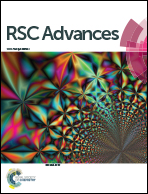Water-soluble optical sensors: keys to detect aluminium in biological environment
Abstract
Metal ion plays a critical role from enzyme catalysis to cellular health and functions. The concentration of metal ions in a living system is highly regulated. Among the biologically relevant metal ions, the role and toxicity of aluminium in specific biological functions have been getting significant attention in recent years. The interaction of aluminium and the living system is unavoidable due to its high earth crust abundance, and the long-term exposure to aluminium can be fatal for life. The adverse Al3+ toxicity effects in humans result in various diseases ranging from cancers to neurogenetic disorders. Several Al3+ ions sensors have been developed over the past decades using the optical responses of synthesized molecules. However, only limited numbers of water-soluble optical sensors have been reported so far. In this review, we have confined our discussion to water-soluble Al3+ ions detection using optical methods and their utility for live-cell imaging and real-life application.



 Please wait while we load your content...
Please wait while we load your content...